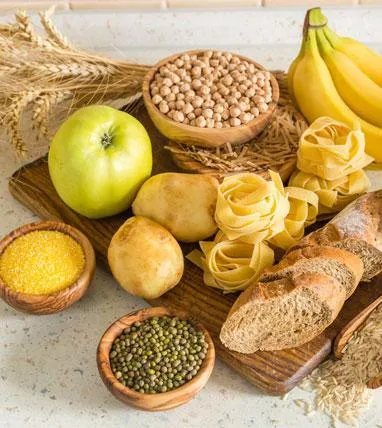Empowering Wellness, Transforming Lives
adjustable band diet
adjustable band diet
Lap-Band and Adjustable Gastric Banding Diet
The adjustable gastric banding procedure works best with solid foods to decrease hunger. Solid foods will stay in your stomach pouch longer, so you should feel full after eating only a few ounces of food.
In order for your body to remain healthy and function properly, it will be important to choose foods that are high in protein and nutritional content. Your ideal diet should include:
low-fat proteins (select meats, fish, skinless poultry, eggs)
healthy breads and cereals
fruits and vegetables
dairy products (good source of calcium, but choose non-fat or low-fat)
heart-healthy fats
Your bariatric surgeon will work with you in developing a new diet plan. Some of the important guidelines for eating with the adjustable gastric band are:
Eat only three small meals a day - this is all you need. Do not snack between meals.
Eat only solid foods at mealtime - this is how the gastric band works to restrict food.
Eat slowly and chew your food thoroughly, until it reaches a liquid consistency - this will help to create the feeling of fullness and make it less likely for food to get stuck in the gastric band pouch.
Stop eating when you feel full - eating too much can result in pain, nausea and vomiting. It can also stretch the gastric band pouch.
Choose healthy foods - make sure you are getting enough protein and nutrients.
Do not drink while you eat - this will wash down the food and you will not reach the feeling of fullness, defeating the purpose of the gastric band. Do not drink for 30 to 45 minutes before or after meals.
CLEAR LIQUIDS
You may drink anything that is clear and liquid at room temperature.
Avoid caffeine and carbonated drinks.
Examples
Water with ice chips
Sugar free popsicles
Crystal Light
Decaf tea
Sugar Free Jell-O
Diet V8 Splash
Do not drink from straws or sports top bottles as this can cause air bubbles and may cause discomfort.
Water may be difficult at first. Try adding lemon and adjusting the temperature.
Please follow your doctors' recommendations on how long to follow each diet.

SOFT FOOD DIET
Mashed potatoes
Bananas
Malt-O Meal
Scrambled Eggs
Baked Fish
Low Fat cottage cheese
Sugar free yogurt or pudding
Applesauce with no sugar added
Soft cooked vegetables
Avoid eating fats and sugar for the time being as these may be difficult for the body to digest in this stage.
Chew your food very well - eat slowly.
If you feel full - STOP EATING

PROTEINS
Protein is needed by the body to build and repair the body's cells and tissues.
Protein plays a vital role in immunity.
Choose lean meats such as:
Fish, shellfish, poultry, lean beef, lamb, pork, veal, and 95% fat free deli meat.
Avoid high fat cooking methods like frying with oil. void high fat meats such as bacon, sausage, pepperoni or salami.

FATS
A limited amount of fat is needed in the diet.
Fats can be found in baked goods (cakes, muffins, cookies), greasy or fried foods, oils and butter.
Fat may be difficult to digest after gastric bypass surgery.
Too much fat may cause reflux (heartburn).
Excess fat may cause diarrhea, nausea and discomfort.
Avoid high fat choices like regular salad dressing, butter, cream cheese and mayonnaise.
Choose low fat options such as fat free / low fat salad dressing, mayonnaise, nonstick cooking spray and olive oil.

COMPLEX CARBOHYDRATES
Carbohydrates including grains and starches are the bodies main source of energy.
They provide energy, B Vitamins, Fiber, and Minerals
Complex carbohydrates provide nutrients and make you feel full.
Look for foods with whole grain or 100% wheat flour.
Examples of complex carbohydrates:
Wheat bread, low fat crackers, cereals with low sugar such as Special K, Cheerios, Raisin Bran, rice and pasta.

FRUITS AND VEGETABLES
VEGETABLES provide fiber, energy, Vitamin A and Vitamin C
Choose a variety of vegetables for your diet
Avoid using high fat cooking methods such as added butter or oil, or adding high fat sauces such as creams, cheese or gravy
Remember to incorporate vegetables back into your diet slowly and start with soft consistencies.
FRUIT provides complex carbohydrates, fiber, energy and Vitamin C.
Incorporate them into your daily routine; fruit makes great snacks.
Choose a variety of fruits
Remember to incorporate fruits back into your diet slowly and start with soft consistencies.

Services
Qualify for Surgery
Gastric Bypass Surgery
Lap-Band Surgery
Gastric Sleeve
BMI Calculator
Gastric Bypass Insurance
Gastric Bypass Surgery Glossary
Gastric Bypass Benefits
Patient Financing
Gastric Bypass Costs
Gastric Banding

